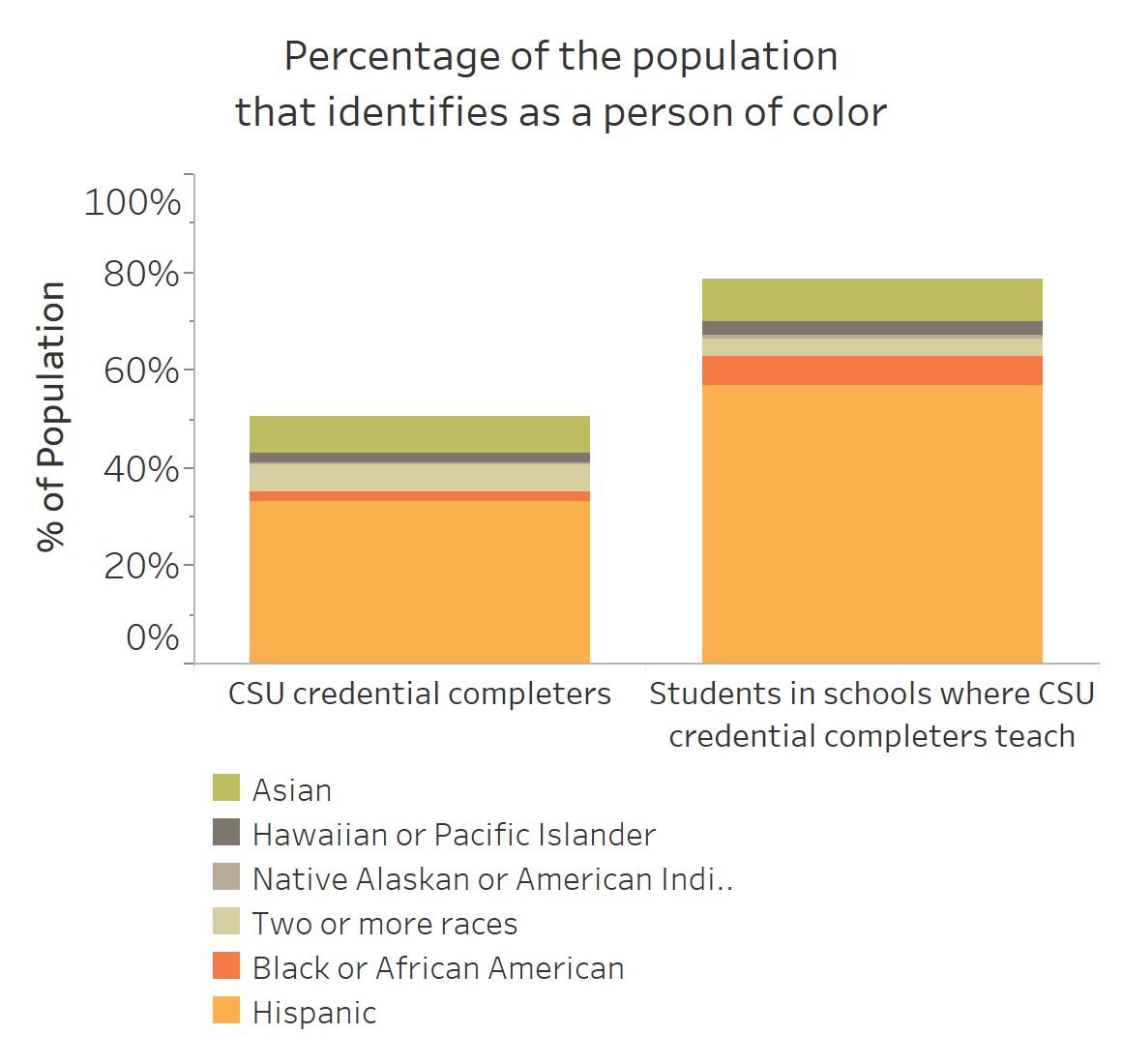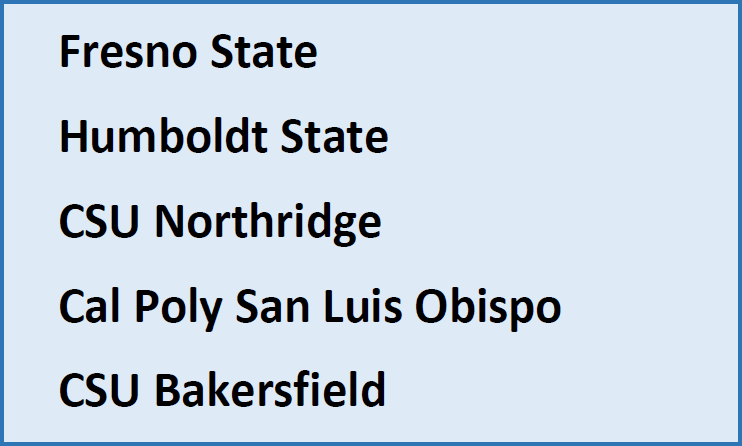The Educator Quality Center brings together five campus teams to address the demographic mismatch between the teachers they prepare and the students and communities they serve.

Figure 1. Three years of CSU completers (2014-2017) matched with the districts where they found employment.
The Problem
Recent employment data for California State University (CSU) credentialed teachers reveals that the diversity of teachers being produced by the CSU does not match that of the districts where the teachers are gaining employment (Fig. 1). This is not unique to California, but part of a national pattern that has a long history. Given mounting evidence about the positive impact that teachers of color have on outcomes for students of color[i], researchers, policymakers, and practitioners are increasingly focusing on developing teacher candidates who more closely match the demographics of the students in their classrooms.
The Vision
While many individual campuses are already working to remedy this issue, a system-wide effort is needed to accelerate and spread successful approaches. Dr. Marquita Grenot-Scheyer, Assistant Vice Chancellor for Educator Preparation and Public School Programs developed a vision for this system-wide effort in partnership with the Educator Quality Center (EdQ).

Figure 2. Learning Lab Teams
Earlier this year, Dr. Grenot-Scheyer asked the Educator Quality Center (EdQ) to serve as the hub for an improvement network that utilizes Improvement Science methods to examine the problem and test changes that could be spread and scaled across the CSU system if successful. This became the Chancellor's Office Learning Lab. All CSU Educator Preparation Programs were invited to apply to participate in the network.
Five campus teams were selected to be part of the first cohort (Fig. 2). Teams consist of faculty and staff who are well-positioned to effect change and who are committed to the extra time involved in being part of the Lab activities. A lead faculty member orchestrates and convenes the team, supported by an improvement coach from EdQ or WestEd, who are partnering with EdQ in this effort. The five campus teams will meet together 3 times for a full day of learning starting in May.
Action Period 1 Begins
The Learning Lab was officially launched in March and will continue through spring of 2021. The work of the Lab is organized in between each Lab session with specific “Action Period" tasks. Action Period 1 involves investigating the diversity gap and the system that is producing it. For campuses, this means examining their pipeline data for gaps, producing process maps to visualize/illustrate pathways to becoming a teacher, and conducting empathy interviews to gain insights into the barriers that too often prevent aspiring teachers of color from entering and remaining in the profession. For the network, this is a time of shared learning, collective sense-making, looking at system-wide data and identifying areas of shared strength and areas in need of improvement. The network will also be setting a network target or aim for improvement to serve as a “north star" for the five teams as they set individual aims for closing identified gaps in their systems.
What Next?
Each team will complete four subsequent action periods over the next eleven months that will provide opportunities to conduct small tests of change in their identified areas of need. Potential changes will be identified from research- and practice-based strategies that were successful in other contexts, and adapted to each specific CSU context. As teams learn from each test, they will adapt ideas and re-test, gradually spreading successful changes. During Lab meetings teams will share and consolidate learning across campuses. Eventually, successfully tested changes will be prototyped and shared for broader testing and application across the CSU.
As the hub of this endeavor, EdQ serves as the main source of administrative support and knowledge management for the Lab. They will continue to share what is being learned in the Lab as the work progresses into next year. Stay tuned!
[i] See: Carver-Thomas, Desiree (2017) Diversifying the Field: Barriers to Recruiting and Retaining Teachers of Color and How to Overcome Them. Learning Policy Institute. Retrieved from: https://files.eric.ed.gov/fulltext/ED582730.pdf